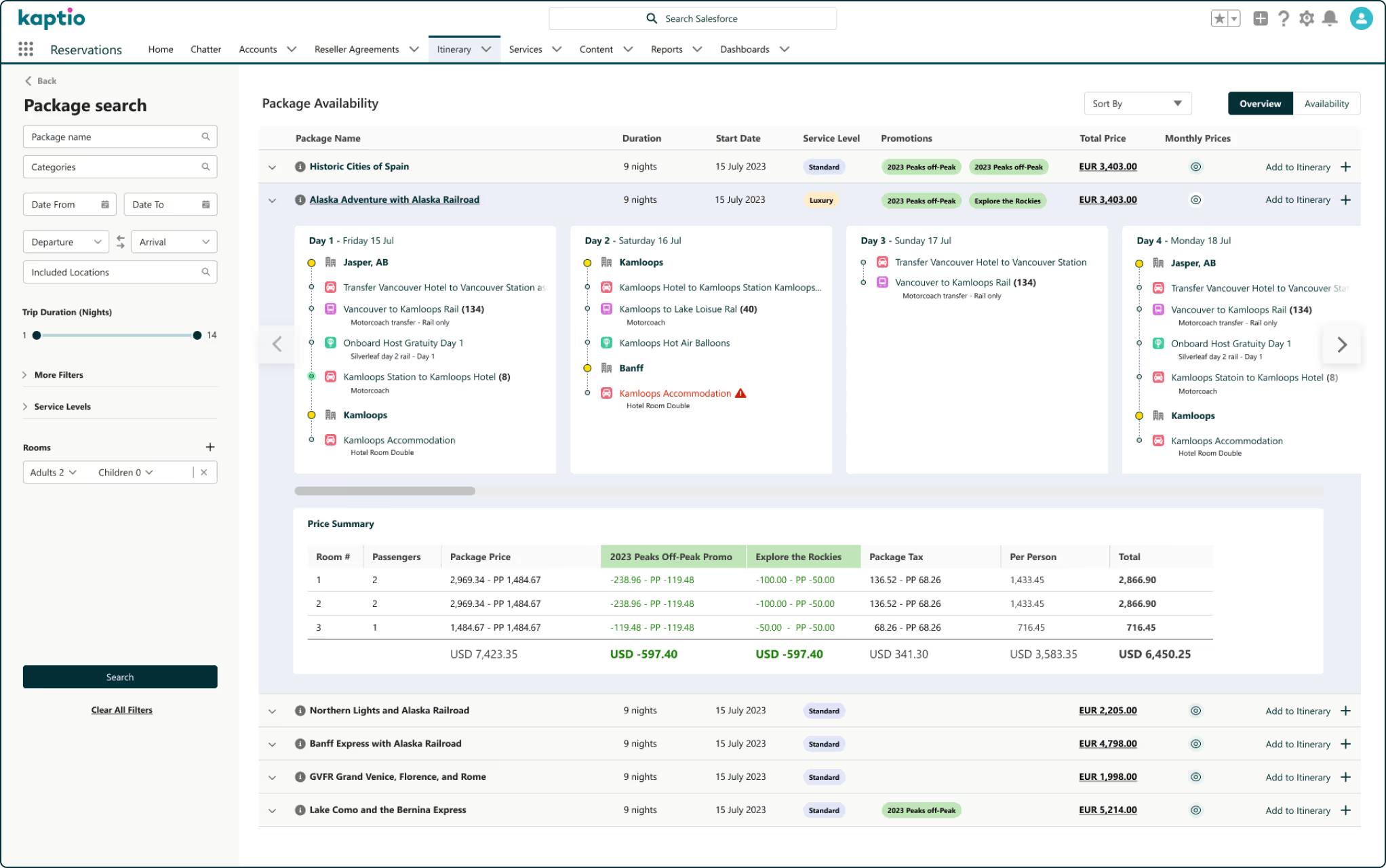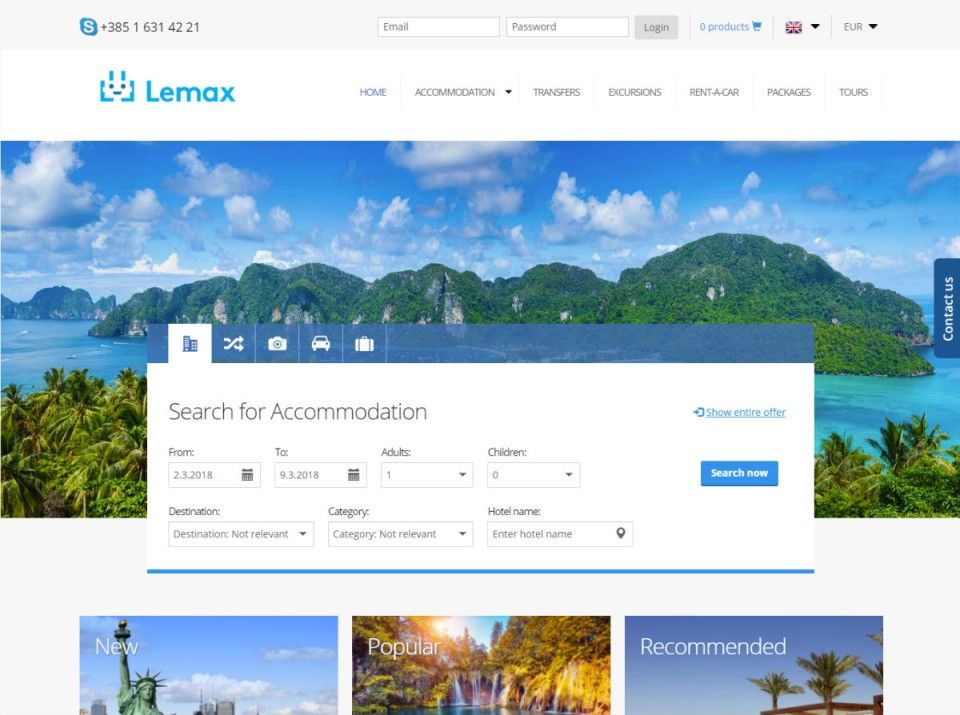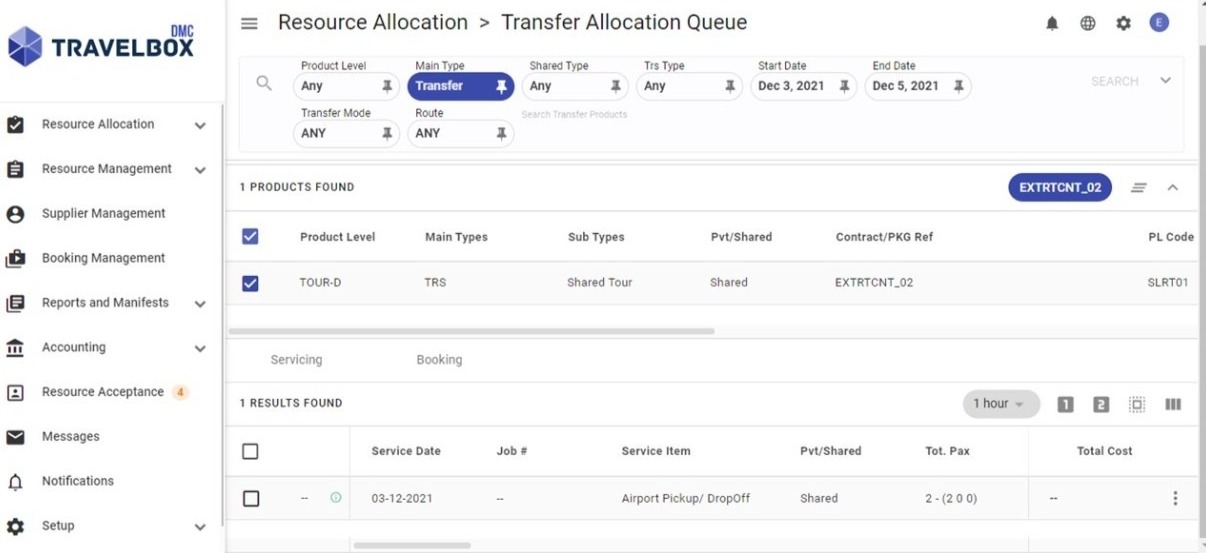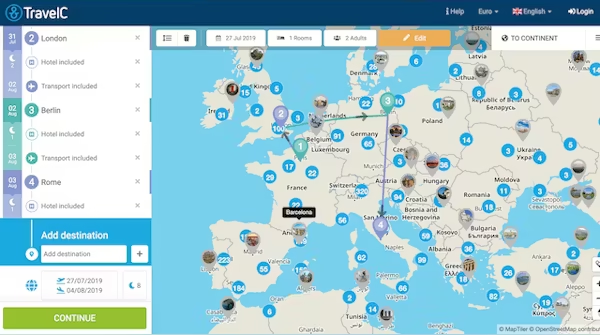
The latest report by Phocuswright reveals steady travel growth globally, with travel gross bookings reaching nearly US$1.6 trillion in 2024, up 6%. The figure is expected to approach $1.8 trillion by 2027. It would be truly satisfying to grab a bite of that almost two-trillion-dollar pie, wouldn’t it? Another significant trend no travel business can neglect is digital acceleration. Online bookings grew 9% in 2024 to $989 billion. By 2027, two-thirds of all travel will be booked online, according to the same source.
The ultimate way to outperform your competitors in this race is to find the best tour operator software that can handle the needed digital transformation of your business while being both reliable, flexible, scalable, and future-proof at the same time. But how can your travel company choose one when there are many? For a start, you can study our comprehensive guide designed to get you prepared for the process. However, eventually, you will have to decide on a tech vendor, and that takes time. GP Solutions values your time and has done some research to showcase a landscape of available software solutions for mid- to large-sized tour operators. Below, we scrutinize eleven of the most recognized providers on the market today, highlighting their strengths, weaknesses, and suitability for different businesses.
Selecting the best tour operator software is not a tactical decision but a strategic investment that directly impacts your operational efficiency, customer experience, and revenue growth. Importantly, the ramifications of this choice will most likely manifest themselves only some time after you have embraced the new technology, so one should tread carefully when deciding where to bring their money.
Below, we present the strongest contenders in the domain of tour operator software for mid-to-large tour operators. We do it in alphabetical order to bring a more objective perspective, since ranking these vendors will mostly depend on your particular case and business needs.
Disclaimer: The information provided in this overview is based on publicly available sources, including the companies’ websites and marketing materials, their positioning on social media and relevant aggregation platforms, as well as reviews by independent individuals on software review platforms. For more details and the ability to apply the discussed solutions to your particular case, we strongly advise contacting the respective company’s business development team.
ATCORE’s ATCOM is an omni-channel reservation and distribution platform engineered for the leisure travel sector’s largest players. It is designed for enterprise-level tour companies and global brands that handle massive reservation volumes for a wide range of inventory, like hotels, flights, trains, and campervans. It combines owned and contracted inventory with dynamically sourced supply and displays products across web, B2B, call center, and API channels.
Large-scale, enterprise tour operators, looking for a platform to handle extreme booking volumes and complex hybrid dynamic packaging.
GP Travel Enterprise (GPTE) has well-earned its place on the list of the best software for tour operators as the dynamic platform designed and developed by GP Solutions. While many competing systems get clients locked into rigid and standardized workflows, GP Travel Enterprise is engineered to orchestrate complex business logic with built-in deep architectural configurability. Rather than being a quick or low-cost fix, the platform provides a unified core meant for long-term operational integrity. This approach makes the software a strategic investment for mature enterprises that focus on sustainable scalability and future-proof IT architecture rather than short-term savings. GPTE’s structure is intended to accommodate complicated multi-brand and multi-entity structures, making it the best choice for mid- to large-sized tour operators, DMCs, and company groups that need to centralize their operations.
GP Travel Enterprise is dedicated to what matters most — advanced reservation and travel business management. It handles the entire life cycle of travel retail, from the creation of complex products to the support for versatile multi-channel distribution strategies. The system provides operators with the ability to scale sales through a fully-featured B2B agent portal, while its Distribution API enables seamless connectivity with third-party ecosystems and custom B2C interfaces.
Beyond sales, the platform acts as a powerful operational backbone. It combines deep native back-office functionality and a flexible integration philosophy, which allows its clients to keep using the specialized tools of their choice. Whether you need to connect specific regional accounting software, a global CRM system, or an advanced BI tool, GPTE ensures your distinctive ecosystem works without interruptions.
Mid-to-large-sized tour operators (inbound, outbound, domestic, FIT, specialist, multiday, luxury) and DMCs who require a single, highly scalable platform that expertly blends the functionality they need.


Book a no-obligation call with us, and let us check if your business fits GP Travel Enterprise.
ISO-Gruppe offers a suite of modular reservation and packaging solutions for tour operators and related suppliers. The company targets medium- to large-sized tour operators with a dual-platform strategy: Pacific covers classic and dynamic packaging with deep master-data control, while Atlantic is a MACH-based dynamic production layer optimized for integrating and reselling external offers. A shared component suite (cache, IBE, APIs, AI) supports high-volume B2B/B2C distribution and tailored workflows.
It can be the best tour operator software for medium-to-large companies (including inbound/outbound and specialists), DMCs, airlines, and attractions that need tailored.
Pacific Booking Functionality

Intuitive’s primary product, iVector, is an online, scalable reservation platform for tour operators, OTAs, and wholesalers. It supports dynamic and fixed packaging, tailor-made itineraries, and multi-channel sales, alongside financial controls and reporting. DealFinder, another company’s offering, delivers sub-second flight/hotel search via caching, while iVectorOne provides a single API for hotel supply from direct contracts, channel managers, and bedbanks.
Tour operators, OTAs, and wholesalers that require high-speed search performance and rapid access to a vast, pre-integrated supplier network to power their online booking engine.
The Juniper Booking Engine (JBE) is a modular, configurable booking and distribution platform designed for large-scale travel businesses. It targets wholesale tour operators, DMCs, and OTAs whose core model relies on global product distribution. Its primary function is to serve as a central connectivity hub, aggregating in-house contracts with inventory from 1,000+ XML-connected suppliers and distributing via API, web, and offline channels. The platform is ideal for enterprises that need to manage and resell a vast, mixed portfolio of travel products at scale.
Considered one of the best tour operator software for large wholesalers, OTAs, DMCs, airlines/cruise lines, and enterprise tour operators that prioritize mass connectivity, multichannel distribution, and AI/BI-driven commercial control over an all-in-one back-office suite.
Business Intelligence Tool

Kaptio Travel is an end-to-end reservation platform built natively on the Salesforce ecosystem. It is renowned as an excellent example of the best software for tour operators who who design and sell complex travel experiences like FIT, group, cruise, and rail journeys. Its primary function is to unify CRM with booking, itinerary planning, operations, and payments.
Multi-day tour operators who are strategically committed to the Salesforce ecosystem and require a highly customizable platform to unify CRM, sales, and operations.
Package Search Functionality

Lemax is an all-in-one travel platform for mid-to-large-sized tour operators and DMCs. Its primary focus is on automating the entire business workflow from complex itinerary building and multi-channel sales to back-office operations and finance. It’s a system built to handle high volumes and complex product offerings; that is why it is a frequent choice for established companies looking to scale.
Established tour operators and DMCs with significant transaction volumes, a need for extensive automation, and resources to manage a more complex implementation.
Lemax System Start Page

Tourplan offers one of the best booking software for tour operators looking to automate the entire business workflow (sales, operations, and accounting). The platform’s core distinction is its built-in, travel-specific financial suite, which includes a general ledger and accounts payable/receivable, eliminating the need for third-party accounting software. It can be deployed as a cloud-based (SaaS) or on-premise solution.
Tour operators and DMCs (from mid-sized to global enterprises) that require a fully integrated system with built-in financial management. Particularly suited for businesses handling FIT, groups, and MICE bookings, and those prioritizing financial control and end-to-end workflow automation.
TourPlan Creditors Tab

CodeGen’s modular product, TravelBox, ensures complete booking lifecycle management and fulfillment automation, starting from the initial inquiry and extending through to the generation of travel accounts ledger entries. The system is designed for multi-brand, multi-currency, and multilingual operations and offers a wide range of specialist modules for accommodation, transport, activities, and financial processes (Accommodation, Car Hire, Customer Profiles, Package Builder, Report Module, Reservation Manager, Ticketing Module, Transportation, Document Repository, Mark Up Manager, and more).
CodeGen offers products that are best for various types of market segments:
TravelBox DMC. Resource Allocation Tab

TravelC is a configurable travel sales system and booking engine. It aggregates content from direct contracts and numerous XML providers, lets users compose multi-destination itineraries (up to 12 service types) in a single session, and distributes via B2B, B2C, B2B2C, and C2C channels. Best where rapid tailor-made packaging and cross-sell revenue are priorities.
Small- to mid-sized tour operators and DMCs seeking a technologically advanced platform to create and sell complex, multi-service itineraries with a strong focus on dynamic packaging and cross-selling.
TravelC Interface

Travel Studio is positioned as an enterprise-grade reservation and management platform from Open Destinations. It is well-suited for handling high transaction volumes, complex multi-component itineraries (FIT, escorted, group, and specialist tours), and global distribution through extensive API connectivity. A key differentiator is its optional Business Process Outsourcing (BPO) service, allowing clients to offload administrative tasks like contract loading.
Established tour operators, DMCs, and rail operators with high transaction volumes, complex itineraries, and the resources to manage enterprise-level implementations.
Travel Studio Interface

So many choices, so many paths
Let us help you make the right strategic choice and select the truly best tour operator software that will answer your needs.
If you want the best for your travel business, get ready that your path to that software won’t be a bed of roses. Complex and global travel operations require meticulous planning and attention to detail, which should be reflected in your software. If you need an urgent fix to your software problems, there are quick solutions out there, but as our experience shows, they are always temporary in nature, and our clients ultimately are looking for a long-term system that will scale and grow with them.
At GP Solutions, we have a unique advantage of offering both a turnkey product (GP Travel Enterprise) and custom software solutions should GPTE not fit or your business be truly unique. If you are on the lookout for a travel tech company, why not contact us? An intro call is free and is beneficial for both sides of the interaction: while you get to know our offerings better, we scrutinize your business needs to suggest the best strategy based on those 20+ years we’ve been in the industry. Fill in the contact form, and we’ll get back to you shortly.
Leave your request
We will contact you shortly
Thank you for your request!
We will get back to you as quickly as possible
Get latest insights
from our travel tech experts!
Join 200+ travel fellows! Get GP Solutions' latest articles straight to your inbox. Enter your email address below:
Thank You!